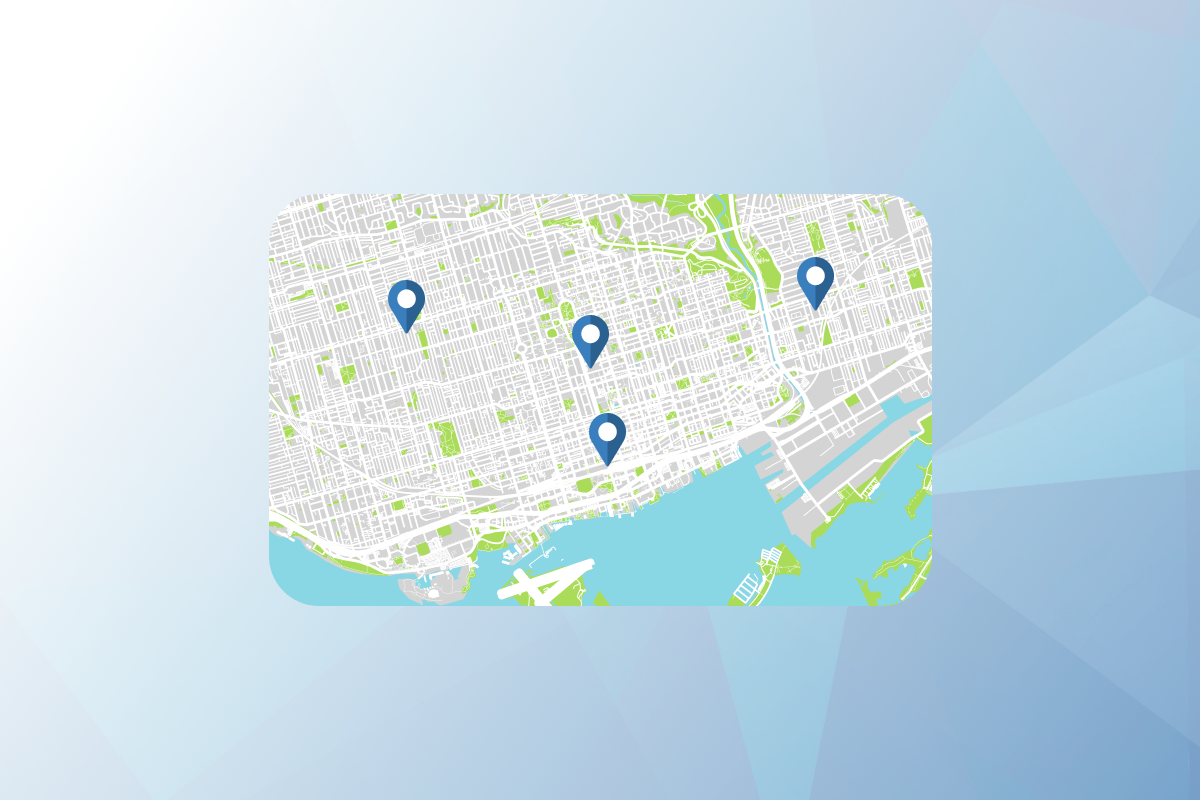Running a multi-location business presents its own challenges, particularly when it comes to digital assets like your website. Say you run a chain of local pizza shops. One visitor might be searching for nutritional information, or even high-level company information like your founding and history.
Another visitor doesn’t care anything about your rebranded mascot, but instead wants to know if your Etobicoke location is open late on Sundays or if they offer contactless delivery.
Here at seoplus+, we love helping multi-location businesses set up their websites to address all needs, ensuring that each visitor finds the information they need or is able to take the desired action, like placing an order or booking an appointment.
Today, let’s explore the foundational elements you need to ensure for your multi-location or franchise website is built for success.
Multi-Location Marketing Takeaways
- Create detailed and specific pages for each location and location sub-service, optimized with localized content
- Own your off-site visibility by claiming Google Business and directory profiles for each location
- Track performance by location so you can make informed marketing decisions
- Think beyond the website with SEO, paid ads, and more
Create individual pages for each location
It is impractical, and frankly bad user experience, to try to include all locations on one page. This is especially true if you have three or more locations. It is too congested to include all the key information.
Here are key considerations to include on each location page:
- Location-specific contact information like address and phone number
- Hours of operation, if applicable
- Services offered (this is doubly important if services differ by location).
- A map, if applicable
- Frequently asked questions (FAQs)
- Trust signals like local reviews, testimonials, and badges
Don’t overlook the SEO basics, like ensuring this page is crawlable, indexable, and doesn’t have any technical issues that would affect load time or mobile performance.
Build on this foundation with nested location inner pages
Individual pages for each location is a good start, but you’re leaving a lot of visibility, ranking, and traffic potential on the table if you don’t take this a step further by adding nested service or product pages.
For example, say you own a fitness centre chain with locations throughout the Atlantic Coast.
Having pages for your fitness centres in Philadephia, Washington, and Baltimore is a solid foundation. But you can elevate by creating pages and highly tailored content around personal training, spin classes, lane swimming, and other services/facilities within your buildings. This way, if someone is searching for spin classes in Baltimore, you won’t be relying on a single Baltimore fitness centre page to do all this heavy lifting for this and hundreds of other search terms.
Have a strategy for each city
What about multiple locations in the same city? This depends on how your business operates, as well as your SEO strategy. Some businesses restrict location pages to where there is a physical location. For example, if I land on a webpage promoting pizza for pick-up in an east-end suburb of the city, I would be disappointed to find out the actual pizza shop is located on the other side of town.
That being said, there are “service area” businesses where you can legitimately serve customers, either by travelling to their home or meeting virtually. For example, a personal injury might be based on Toronto but able to serve clients throughout the province of Ontario, so location pages for Windsor or Kingston fit in the strategy.
While you’ll want to have unique pages for each physical location (like a pizza shop on 34th Street, and another on 72nd Street in Manhattan), it can be helpful for wayfinding to also have a New York City page that lists all available locations. You might also consider a store locator tool if you have more than 5 locations or so.
Optimize the page for localized content
There are a few ways to accomplish this:
- To the extent that it serves the user, incorporate the location into the title tag, meta description, page heading(s), and body content.
- Apply any wayfinding information (ex: located in the east end of Yorkdale Mall, next to Nordstrom)
- Apply any location-specific information, like the name of the store manager or exclusive service offerings
- Incorporate location-specific trust signals, everything from customer reviews to accreditations
Keep all information up-to-date
If you have a closed franchise still listed on your website, or hours of operation that are not accurate, you lose trust with the customer. Ensure all changes are applied to the website, as close to real time as possible.
Create and maintain profiles on Google Business Profile and directories
Google Business Profile is often the first stop for customers, whether they’re higher in the funnel and looking to choose between vendors, or if they’re existing customers who just want to confirm your hours on a holiday weekend.
You can set up your Google Business Profile for free. Each listing should be customized to the location. According to Google’s policies, any GBP profile name should only be the business name. For example, Metro Insurance, not Metro Insurance – Yonge & Eglinton or Metro Insurance – Montreal.
Depending on your preferences, you may want to have all GBP information managed by one central resource, or you may want to grant each store individual ownership. That said, I highly recommend having ownership centralized to avoid verification issues down the road. Access can be delegated from there to individual stores or partners.
In addition to Google Business Profile, create/claim profiles for all locations on the major directory sites like Yelp and Yellow Pages. All information should be consistent with what’s on your website, and kept up to date.
Beyond this, consider niche directories. For example, making sure your information is accurate on mall websites (and if you ask nicely, they may even provide a backlink).
Listing management is critical to multi-location businesses, and it’s not practical to handle everything manually (or even possible, for companies with hundreds of locations). Listing management software like Yext or Birdeye can streamline management of brand data, reviews, and more across almost any publisher or platform.
Track performance by location
You might have an overall understanding of how much traffic your website is generating, or what keywords your website is ranking for. But do you have visibility into the performance of each individual location?
There are many ways to track performance by location. Here are some ideas:
- Set up reports or dashboard to report on your best and worst performing locations by metrics like traffic, bounce rate, and time on page.
- Use Google Search Console or a tool like SEMRush to identify which location pages are ranking for which keywords
- Set up conversion tracking to measure actions like phone calls, form fills, live chats, button clicks, and more
Add structured data markup
Structured data markup, or schema markup, is a way to help search engines better understand the context of your content. For example, LocalBusiness markup allows you to pass on information like operating hours, aggregate hours, price range, and more.
As a bonus, this markup can also help your website appear with advanced features in Google search results, like star ratings and more.
Conduct an SEO strategy
Once you have data, you can begin to leverage this information to improve SEO. For example, you might discover that the homepage is ranking for a given city keyword, instead of the most relevant city page. Then, you can execute a strategy like re-optimizing the location page, de-optimizing the homepage for that city keyword, conducting a link building campaign to point relevant domains to the location page, and much more.
Supplement SEO traffic with paid ads
While most of these foundational steps have to do with organic traffic, paid advertising is a critical way to drive more traffic to your website.
With the right targeting and creative, you can drive traffic to your location pages and increase visibility for your business. You can get hyper-specific with geo-targeting, down to specific neighbourhoods or even by postal code.
By pointing visitors to the most relevant destination URL, you can ensure they see the most optimal content instead of rolling the dice with a Google search. This is especially important for locations in smaller areas which may be “cannibalized” by their larger neighbour (for example, a Toronto store page drawing search traffic away from its Mississauga companion).
seoplus+ is your multi-location SEO partner
Running a multi-location company is complex and presents many challenges that standard businesses may not have to navigate.
Turn your website from a potential complication into a powerful resource to drive more business and delight customers with these foundational multi-location website tips.
Connect with one of our multi-location marketing specialists to see how we can help you achieve success.


